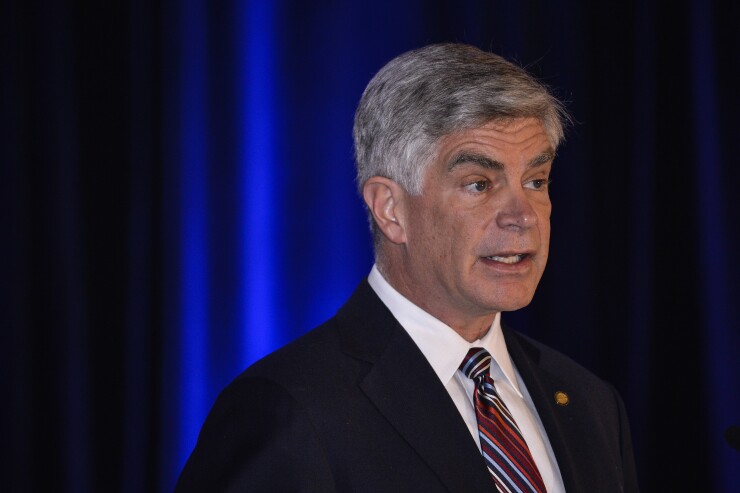Although he continues to maintain that two rate hikes this year are appropriate, Federal Reserve Bank of Philadelphia President Patrick Harker said Friday he is closely monitoring the flattening yield curve.
While the yield curve has flattened, and could soon invert, according to some, “My assessment is that the worries so far have been inflated,” Harker told the Central Bucks, Pa., Chamber of Commerce, according to prepared text released by the Fed.

While a flattening yield curve may signal “a downward shift in overall economic conditions,” he said, “that’s not a law of economic nature by any means, and consumer confidence is, in fact, high at the moment.”
The situation is more akin to the mid-2000s than the 1970s, he said, dismissing the likelihood of recession. “One concern may be that financial institutions lengthen terms of loans and investment in a search for yield. But I think the continued removal of accommodation will help somewhat, and, overall, I don’t think it’s in need of more stringent monitoring than other developments.”
Harker also is monitoring the unwinding of the Fed’s balance sheet. Although he expects it to “be a slow, mechanical process,” should there be an economic shock, the runoff will be revisited. His big concern is “we haven’t faced exactly this type of normalization before; no one has,” and the balance sheet will not look the same as it did pre-crisis, so the ending level in unclear.
The economy’s natural rates of interest, or r-star, is low and is expected to remain so “for a decent amount of time,” which could make it difficult for the Fed “to meet our inflation target. If that were to happen, it could impact inflation expectations, further complicating the issue. Inflation can fall victim to a self-fulfilling prophecy: One of economics’ idiosyncrasies is that market expectations of low inflation can actually contribute to making it happen.
“In that case, we at the Fed could be forced to rethink our policies. I am not — for the record and to be very clear — suggesting that we should. I am saying that if the possibilities we are currently debating turn out to be the new reality, then that is one option that is on the table.”
Inflation, he said, should just miss the 2% target this year, and be a bit above next before being on target in 2020. “But projections are only that — projections — and I’m more guarded in my view about the path of inflation than I am about economic activity,” he noted.
“For that reason — and this is the part people always care about the most — I see two rate increases as the likely appropriate path for 2018. Of course, I’ll continue to monitor the data as they roll in, but that’s the view in the first month of the new year.”





